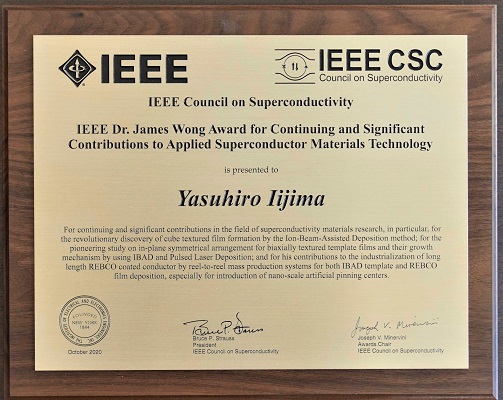We are one of the world’s leading producers of second-generation high temperature superconductors.
These products have huge potential to address the most pressing environmental issues including energy generation through fusion, and improved efficiency of energy usage. They are also used for a wide range of scientific applications from particle accelerators to nuclear magnetic resonance (NMR).
Superconductivity is the disappearance of electrical resistivity materials at certain temperatures (called the critical current). It was discovered in 1911 by Kamerling Onnes. The effect was observed in some metals such as mercury and lead, but it only occurred at very low temperatures using liquid helium at temperatures close to zero Kelvin. Cooling to these temperatures is expensive and challenging for many practical applications, so the race was on to find materials which showed this effect at higher temperatures.
High temperature superconductors are typically defined as those materials that are superconducting around 77K. This temperature is achieved relatively easily with liquid nitrogen. These materials tend to be more complex crystalline structures, including Rare-earth Barium Copper Oxides, otherwise known as ReBCO.
As well as temperature, superconductors can be defined by their behaviour in magnetic fields. The first superconductors could not be penetrated by magnetic field. This is a phenomenon known as the Meissner Effect. These materials tend to lose superconductivity at relatively low fields and are known as “first generation”.
“Second generation” superconductors allow an intermediate phase where external magnetic fields can penetrate the material as vortexes. These materials can operate in higher fields.
In the 1990s Fujikura pioneered the manufacture of ReBCO based, Second Generation High Temperature Superconductors - ReBCO 2G HTS. We pioneered two key processes of Ion Beam Assisted Deposition (IBAD), and hot-wall, Pulsed Laser Deposition (PLD).
The IBAD process provides a uniform buffer layer of MgO on a metal substrate, which in turn aids crystal alignment of the subsequent superconducting layer via the PLD process.
This contribution to advancing superconductivity was recently recognised by the IEEE Dr James Wong Award presented to Dr. Yasuhiro Iijima, a Fellow in our Superconductor Research Department.
Our in-house expertise of these processes firmly places Fujikura as the world leader of high quality ReBCO based second generation high temperature superconductors.
